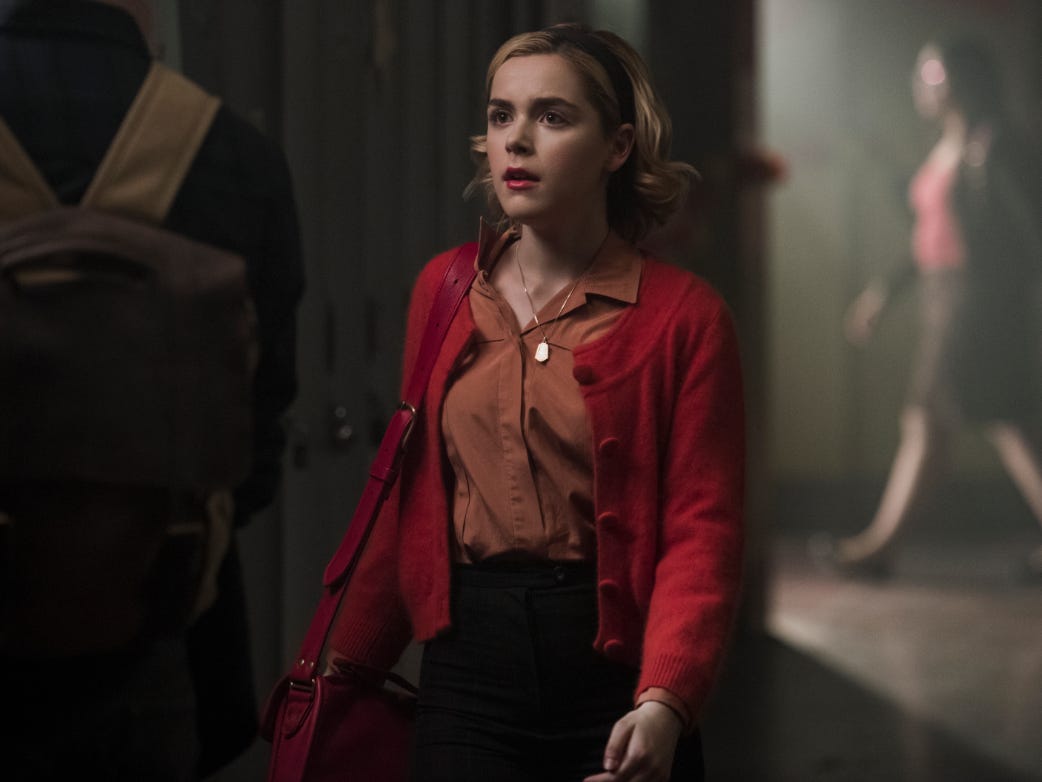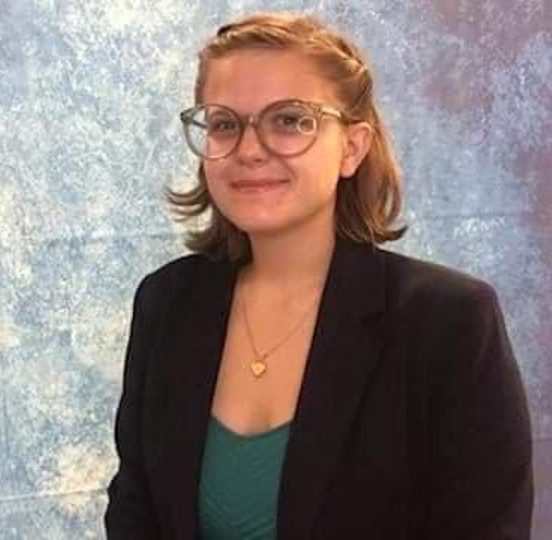As of January 2020, there are three seasons of “Chilling Adventures of Sabrina” on Netflix. Many fans have flown through the show and are looking for more of Sabrina’s witchcraft. What better place to look than the source that inspired the show? Here’s what fans can expect from the comic. Spoilers ahead!
When I picked up “Chilling Adventures of Sabrina Occult Edition” at my local comic book store, I had just finished the third part of the Netflix adaptation. To be honest, the show was underwhelming. While I was looking for something with themes similar to “The VVItch,” I was given something more akin to “Riverdale.”
Don’t get me wrong, I loved watching Kiernan Shipka bring Sabrina to life and the plot was interesting. But I wanted something else from a dark retelling of “Sabrina the Teenage Witch.” Something more witchy. And, oh, did the comic edition of “Chilling Adventures of Sabrina” deliver.
Key Differences Between the Show and the Comic
Although the show and the graphic novel had many noticeable differences, the first one I noted was the time period. While the show is set during the modern era with mixed-in vintage-inspired elements, the comic is clearly set in the mid-20th century.
Much of the action in the comic “Chilling Adventures of Sabrina” happens in the 1960s, which allows the story to play to and stray from different tropes of the era. For example, Sabrina’s relationship with Harvey Kinkle falls perfectly in line with the picturesque high school sweetheart trope that was especially idealized in the American postwar era. Of course, underneath the surface, Sabrina is a witch who cast a spell on Harvey to make him ask her out in the first place.
Many of the characterizations in the graphic novel are vastly different than in the show. For one, the aforementioned Harvey is a hunky football player whose most important role so far is disrupting Sabrina’s dark baptism. Roz is a redheaded gossip whose favorite pastime is badmouthing Sabrina, whereas she plays Sabrina’s best friend in the show. Theo, a main character in the television adaptation, doesn’t appear at all in the comics.
In the comic, Sabrina’s aunties are less doting — especially Hilda. They still act as her caretakers and are the first to teach Sabrina about the dark arts, but there is something more sinister about the pair between the pages. Cousin Ambrose, however, carries the same purpose as his counterpart in the first season of the Netflix adaptation.
Sabrina’s parents remain the same: Edward Spellman is a warlock and Diana is a human, making Sabrina half witch and half mortal. However, in the show, Sabrina’s parents are both dead. Edward and Diana die on an ill-fated plane — one that is alluded to have been magically tampered with by Father Blackwood, former High Priest of the Church of Night. It’s later revealed Satan is Sabrina’s real father.
In the comics, Edward and Diana are both still alive, but only to an extent. Diana is locked in a mental institution, forever reliving the nightmare of witches kidnapping her baby. The comics reveal that Edward is trapped in another dimension entirely and a true warlock who looks out for his own self-interest above all.
Madame Satan is still present in the comics, but she is no longer Satan’s jilted quasi-queen. Instead she is Iola, jilted former lover of Edward, mistakenly brought back from the dead (by Betty and Veronica from Riverdale, no doubt). She acts as the series’s main antagonist, motivated by pure revenge.
Fans of Salem the cat who were disappointed about his few appearances in the show will be delighted to know he has more interactions and interjections in the comic’s narrative. Not only does Salem get more time in the story, he also receives a more substantial plot. One chapter is even devoted to explaining Salem’s history along with other familiars.
What the Comic Did Better
As I mentioned before, I was looking for a “Chilling Adventures of Sabrina” tale that could bring about feelings similar to watching Robert Eggers’ “the VVitch.” While the show is constrained by a recommended age 14 rating, the comics aren’t bound by the same rules. The art doesn’t stray from displaying extremely gory, disturbing scenes including bodily harm, rotting flesh and cannibalism.
Moreover, Sabrina’s conflict about signing her name into the devil’s book happens only after her life as a witch is well developed. One of the drags of the show is the constant battle between Sabrina having to choose between her life as a normal high schooler and that of a teenage witch.
As someone who has attended American public school and was once a teenager, I personally would be dreaming about the day I finally got to sign my name in the dark book in exchange for awesome powers. Although Sabrina’s conflict is present in the comic, the consideration she gives toward staying mortal is more subtle and makes more sense than in the show, where she only understands what she would be giving up when she was presented with the threat of losing Harvey.
Madam Satan’s identity as Edward’s ex, as opposed to Satan’s, helped ground the story of the comic better than the show did. The series delved deep into Lucifer’s mythology, but by doing so lost a certain aspect of mystery about the figure. Although Lucifer does appear in the comic, he shows up only sparingly and always as Baphomet.
What the Show Did Better
I was disappointed the Weird Sisters didn’t make quite the same appearance in the comic as they did on the television adaptation. On Netflix, Prudence, played by Tati Gabrielle, owns any scene she’s in with her Weird Sisters. The trio follows their own agenda and it’s devilishly delightful. The corresponding 2D witches are only in one passing panel, making the comic less appealing.
Moreover, television as a medium offers more opportunities to set the tone of the show and create a defined aesthetic. Almost any scene of the Netflix adaptation makes me miss the creepiness of a chilly October day with the campiness of an impending Halloween night.
The Future of the Chilling Adventures of Sabrina Spellman
As many fans know, Netflix’s “Chilling Adventures of Sabrina” has only eight episodes left after the streaming service announced its cancellation in early July. Although I think the show missed many opportunities in the story, I will miss seeing Shipka as Sabrina.
Fortunately, the comic, which was put on indefinite hiatus in 2017, will be given a second chance with the show’s ending. One news site reports that future comics will continue the show’s storyline and use the television character’s likenesses, but I would rather see a continuation of the comic’s storyline before it was put on halt.
Oh well, as Madam Satan Iola sings, “Que sera, sera…”

















